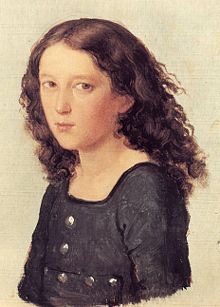|
Concerto for Violin and Strings (Mendelssohn)
The Concerto for Violin and String Orchestra in D minor, MWV O 3, was composed by Felix Mendelssohn at the age of thirteen. It has three movements, Allegro–Andante–Allegro, and performance duration is approximately 22 minutes. Felix MendelssohnMendelssohn was considered by many of his time to be a prodigy comparable only to the young Wolfgang Amadeus Mozart. Besides being a brilliant piano virtuoso, his composition took a firm step forward in musical development. In the period when this concerto was composed (from 1821 to 1823 while aged 12 to 14) Mendelssohn composed twelve string symphonies. At the age of eleven, he had written a trio for strings, a violin and piano sonata, two piano sonatas and the beginning of a third, three more for four hands, four for organ, three songs (lieder), and a cantata. The concertoMendelssohn wrote this violin concerto for Eduard Rietz (eldest brother of Julius Rietz), a beloved friend and teacher who later served as concertmaster for Mendelssohn's legendary performance of Johann Sebastian Bach's St Matthew Passion, which has been thought to have resurrected Bach in the public image. When Mendelssohn died, his widow gave the manuscript of the long forgotten concerto to Ferdinand David, another close friend of Mendelssohn's and a leading violinist of the period, who in fact had premiered his Violin Concerto in E minor. StructureThe concerto consists of three movements: Revival of the concertoYehudi Menuhin, the violin virtuoso, was shown the manuscript of the concerto in the spring of 1951 in London by Albi Rosenthal, an amateur violinist and rare books dealer. He bought the rights to the concerto from members of the Mendelssohn family residing in Switzerland. Menuhin edited the concerto for performance and had it published by Peters Edition. On 4 February 1952, Menuhin introduced the concerto to a Carnegie Hall audience with a "string Band", conducting the concerto from the violin. Menuhin played the work often in recital, and made three recordings of it. The first was made immediately after the New York premiere, with him conducting the RCA Victor String Orchestra (his conducting debut on record), the second made the following year with Sir Adrian Boult and the Philharmonia Orchestra, and the last in 1971 with Rafael Frühbeck de Burgos. The critics were pleased with the New York premiere. The New York Times admired its "lively jesting finale in the gypsy style", while the New York Sun called it "utterly delightful" and thanked Menuhin for bringing the manuscript to the world's attention. Menuhin himself loved the concerto and thought Mendelssohn was probably quite proud of it.[citation needed] He also found points of similarity with the later E minor Concerto. He said:
However the concerto has not established itself as a staple of the violin repertory, as has the E minor Concerto. Recordings
Sources
External links |
||||||||||||||||||||||||||||||



